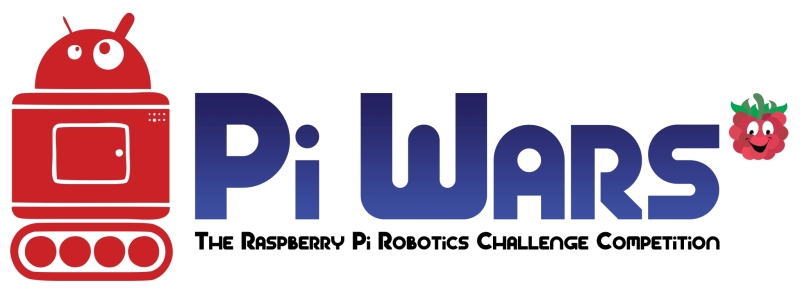- All robots must have an operational Raspberry Pi at their core.
- Other boards, such as an Arduino or other microcontroller, may be used on the robot but the Pi must be in overall control.
- There will be two categories of robot: those that cost less than £75 to be build and those that cost £75 or more. Each of these categories will take place in a challenge-based competition. The cost must include the cost of the Raspberry Pi.
- An additional piece of equipment e.g. a laptop, mobile phone or tablet may be used to control the robot, but must not be physically attached.
- The additional equipment specified in rule 4 does not count towards the overall cost of the robot for the purposes of rule 3.
- All robots must be powered by batteries and must not require mains power for anything except charging battery packs. The cost of batteries and the charger does not count towards the overall cost of the robot for the purposes of rule 3.
- There will be a number of different challenges into which you may enter your robot, the results of which will contribute to an overall score.
- Some of the challenges will be mandatory.
- The footprint of the robot must be no larger than a sheet of A3 paper (420x297mm). The footprint is defined as being the largest cross-sectional area when viewed from above. Robots must operate in ‘portrait format’, so the short edge will be the front of the robot and the long edge will be the left and right sides.
- It is permitted to add and remove components from your robot during the course of the competition in order to tailor it to individual challenges. However, the basic chassis, Pi and controller arrangement should remain the same.
- As well as the main challenge-based competition, there will be additional prizes awarded:
- Smallest robot
- Best non-competing robot
- Best autonomous robot (point accumulator from autonomous challenges)
- Best remote-controlled robot (point accumulator from remote-control challenges)
- Most feature-rich robot
- The Jim Darby Prize for Excessive Blinkiness
- Most innovative robot
- Most visually appealing robot
- Best Raspberry Pi-only robot.
- All decisions made by the relevant judge or judges are considered final.
- Robots will not be allowed destructive capabilities. So, for instance, obstacles will need to be navigated rather than knocked down, burnt, disintegrated etc.
- Flying robots are not permitted due to safety concerns. Walking robots are allowed (although they will obviously be at a disadvantage in some challenges like the straight-line speed test).
- Where points are awarded in rankings and there is a tie, the tied robots will receive the average score for the number of places tied. So, for instance, you would have 1st place, 2 in 2nd place (with the average of points awarded to 2nd and 3rd place) then 4th place.
- There is to be strictly NO SOLDERING inside the Institute of Astronomy. An uncovered area will be made available outside the building. Any soldering taking place inside the building will a) probably set the fire alarms off and make us look very stupid and b) result in instant disqualification from the competition.
Clarifications to these rules will be added based on any questions we receive.
Click here for a list of the challenges that you may take part in as part of the competition.
You can hear all about the competition by listening to…

